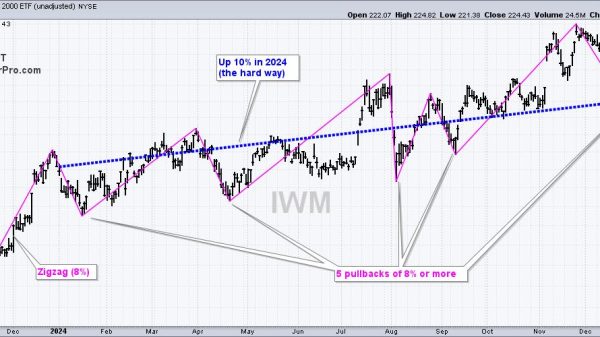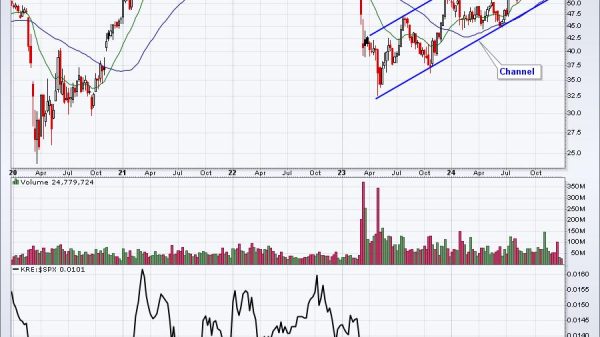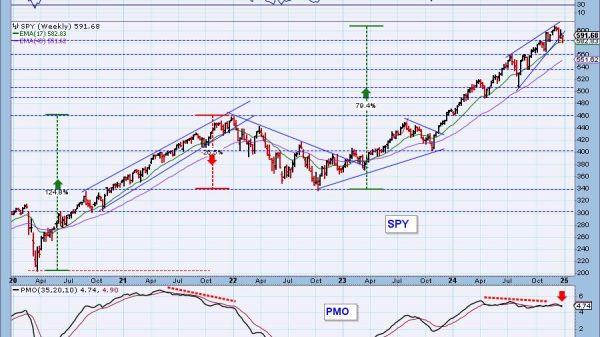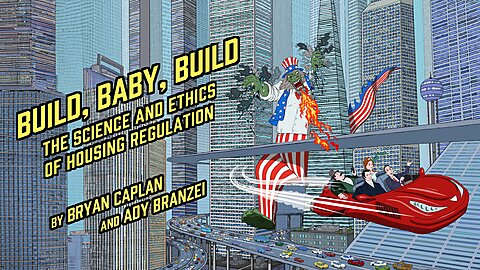Bryan Caplan
The Cato Institute has just published my Build, Baby, Build: The Science and Ethics of Housing Regulation. The book is a non‐fiction graphic novel. Think of it as the comic book equivalent of a documentary. Together with illustrator Ady Branzei, I combine words and pictures to give readers a tour of housing regulation, with a focus on how government restricts the construction industry, and what would happen if the restrictions were lifted.
About fifteen years ago, Larry Gonick’s Cartoon History of the Universe opened my eyes to the high potential of graphic non‐fiction. Gonick’s books capitalize on the adage that “a picture is worth a thousand words” to teach history quickly. They use beauty and humor to hold readers’ attention. And though they look like comic books, they’re carefully researched.
In Build, Baby, Build, I try to emulate Gonick’s virtues. The book distills a vast empirical literature into a few critical lessons. Lessons like:
US housing regulation roughly doubles the cost of housing.
Besides making housing much cheaper, deregulation would increase productivity, equality, social mobility, environmental quality, fertility, and safety.
The standard arguments in favor of regulation are both overstated and one‐sided.
But what finally convinced me to make this book a non‐fiction graphic novel was my realization that what drives much, perhaps most, support for housing regulation is aesthetics. Economists focus on cost‐benefit analysis, but normal people are more likely to ask themselves, “Will development be beautiful?” — then confidently answer, “Absolutely not.”
Faced with such attitudes, economists tend to facepalm in frustration. My reaction, though, is remember 19th‐century French economist Frédéric Bastiat’s classic essay, “What Is Seen and What Is Not Seen.” Writing in 1850, Bastiat explained that people focus on the obvious direct benefits of government, while ignoring the severe yet non‐obvious harms. When government subsidizes universities, for example, people rarely ponder, “What else could have been done with the money?” When government denies permission to build, similarly, we never actually see what would have been built if permission were granted. This makes it easy for critics to visualize the ugliest possible outcomes.
The epiphany that convinced me to write Build, Baby, Build: Instead of trying to argue people out of their aesthetic pessimism, I should use the graphic novel format to fight aesthetics with aesthetics — to show readers the beautiful unseen world that government forbids. And that’s why the fifth chapter of the book resurrects the great Bastiat as a co‐narrator. After we explore his classic insight on “the seen versus the unseen,” Bastiat joins me on a guided tour through a deregulated world. Which lets me showcase a world that is not merely richer than the status quo, but more aesthetically pleasing as well.
For example, regulators often forbid construction in areas famous for their natural beauty. But why assume that construction would tarnish natural beauty rather than amplify it? Take a look and see for yourself:
To my eyes — and hopefully yours — the bottom panel is more, not less gorgeous than the top panel. And while you can fairly point out that these are fantasy drawings, they are inspired by real life. Who really aesthetically prefers the largely desolate California coastline to the awe‐inspiring towns of Italy’s Amalfi Coast?
The same lesson holds for so many of forms of housing regulation. Today’s governments strictly regulate skyscrapers. But the beloved skyline of New York City was largely built under near‐laissez‐faire conditions. Today’s governments strictly protect historic buildings. But construction of these historic buildings often began with the demolition of an earlier beloved building. The original Waldorf‐Astoria Hotel really was destroyed to make room for the Empire State Building. That’s what I call building “the history of the future.”
In a critique of my first book, philosophers Jon Elster and Hélène Landemore accuse me of being willing to use almost any rhetorical strategy to get my points across. While they overstate, they’re on to something. Once I’m convinced that my arguments are sound, I strive to sell them. Straightforward logic and evidence are fine, but so are thought experiments, appeals to common sense, humor, and beauty. False modesty aside, I think Build, Baby, Build is a beautiful book. If you like the visual samples I’ve shown you, I think you’ll agree.
























